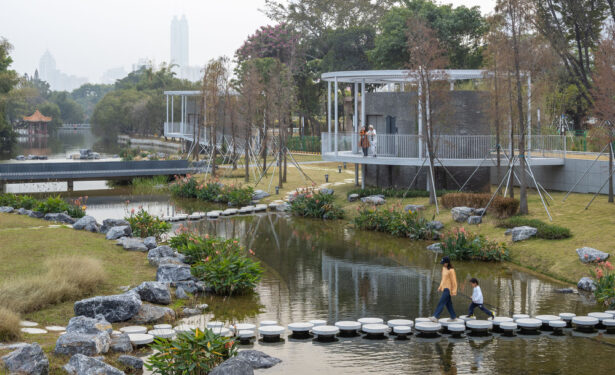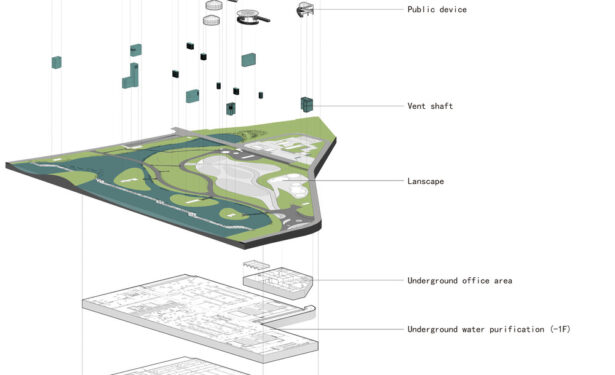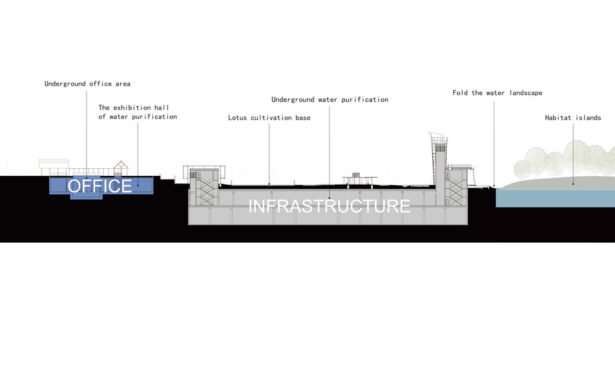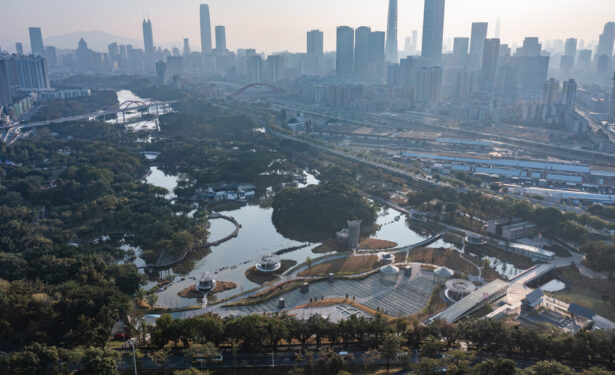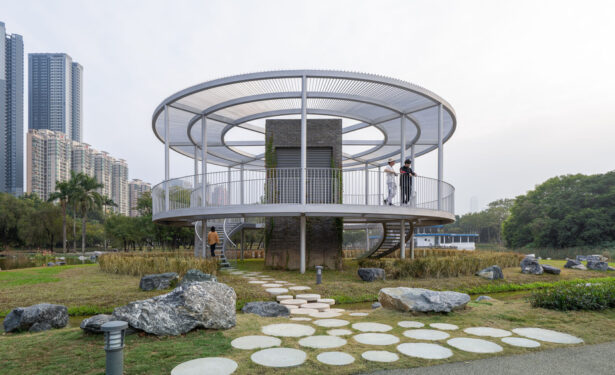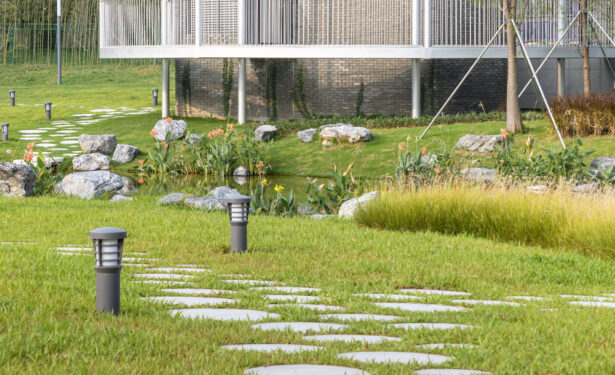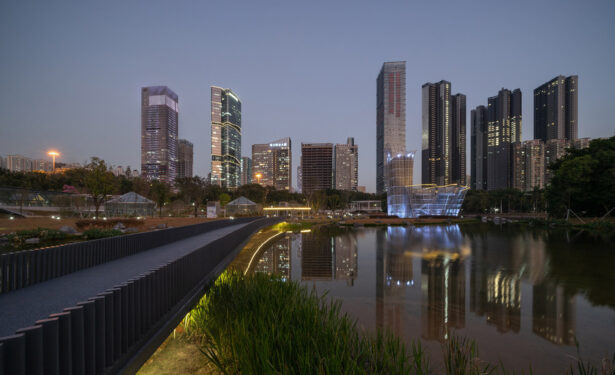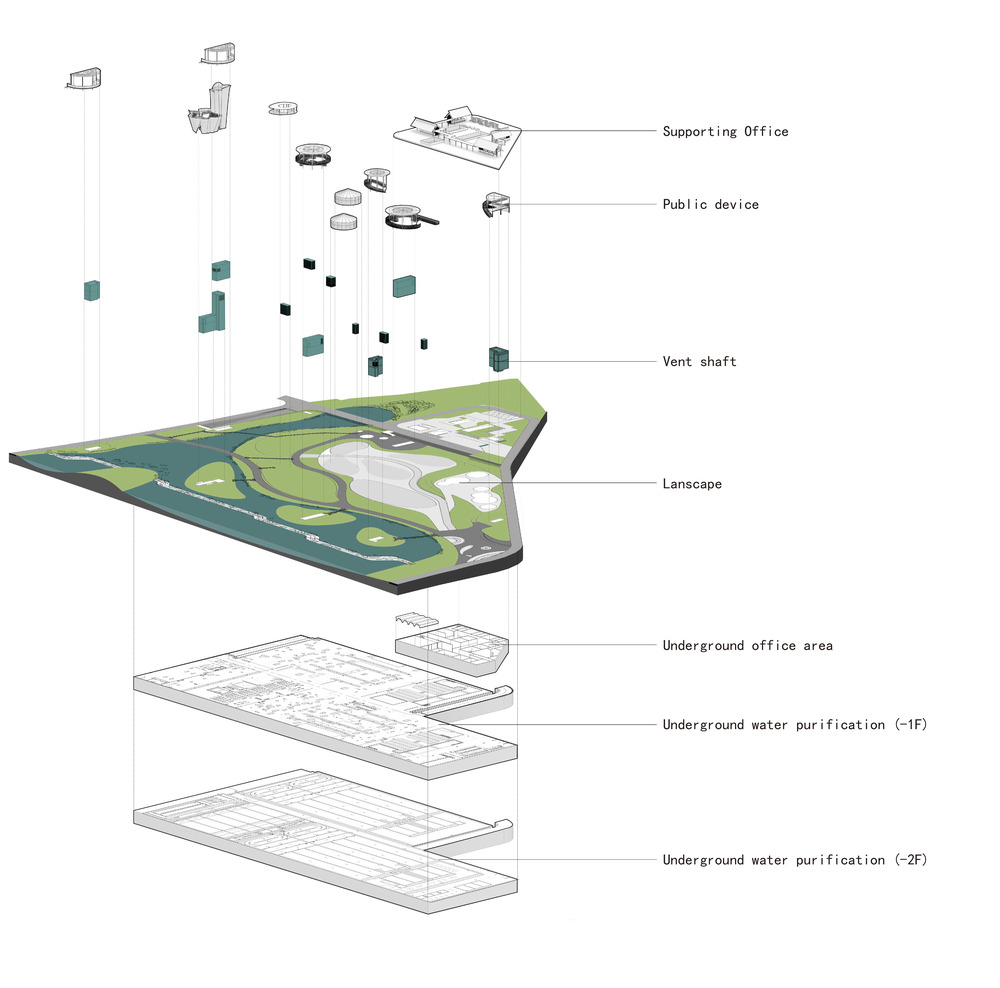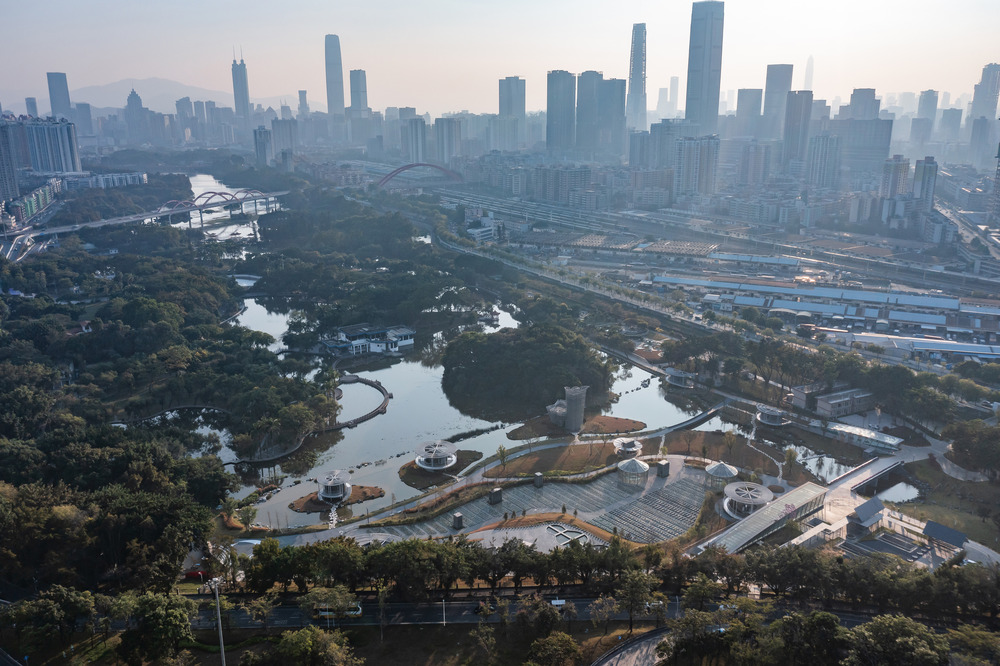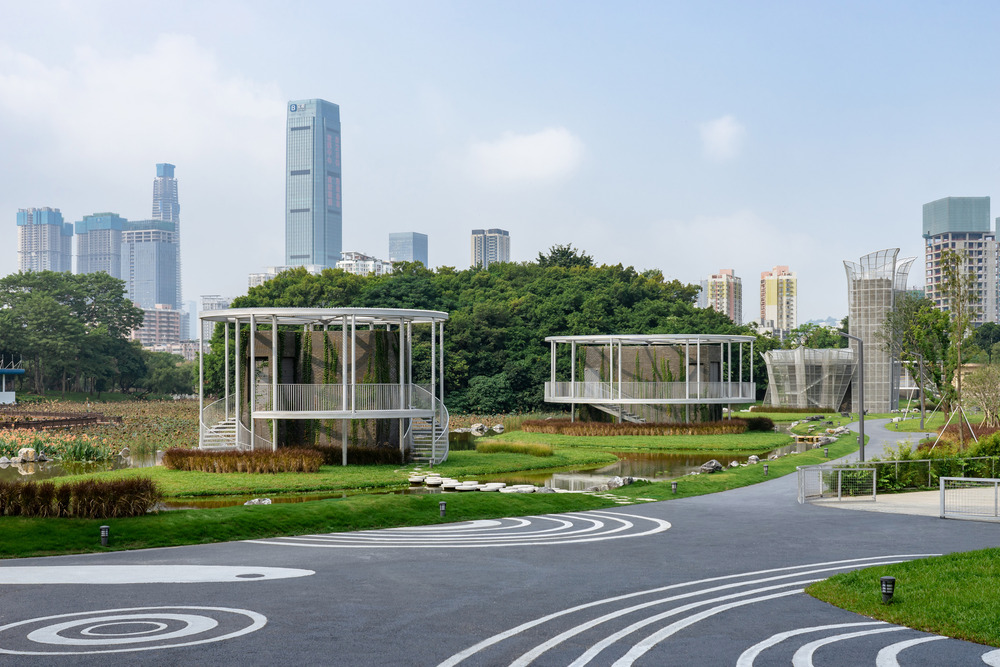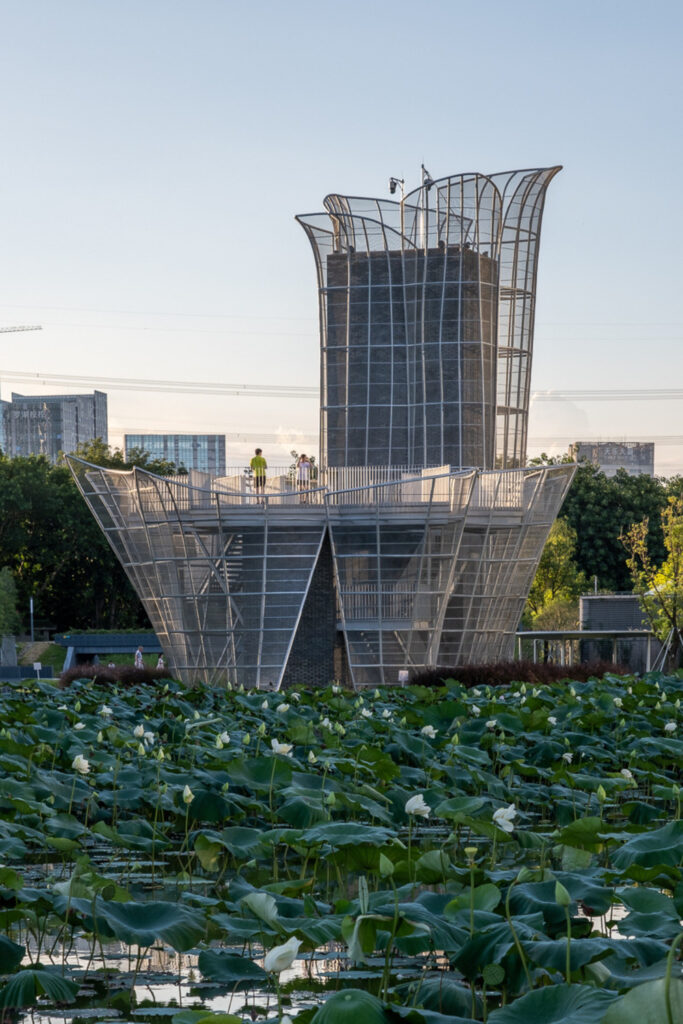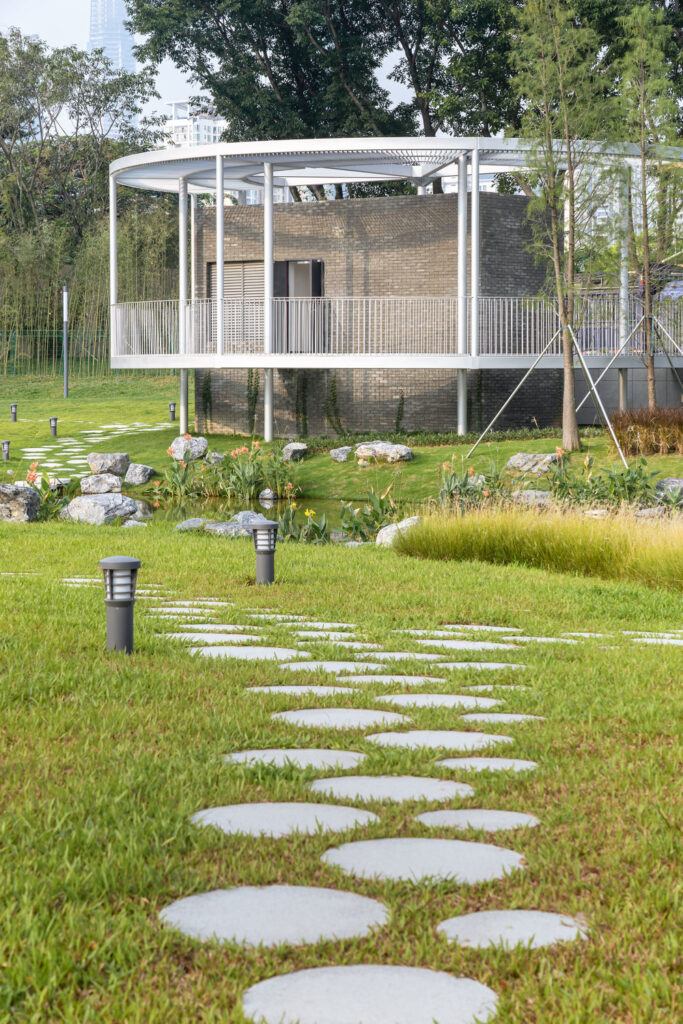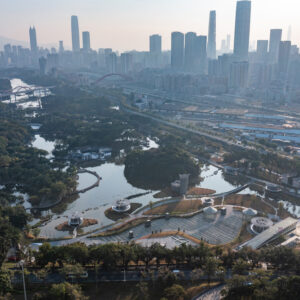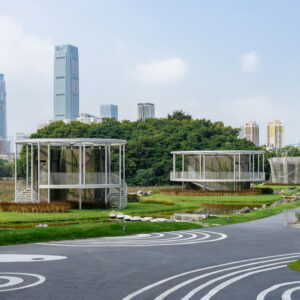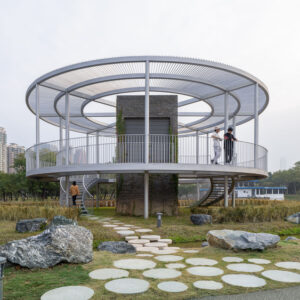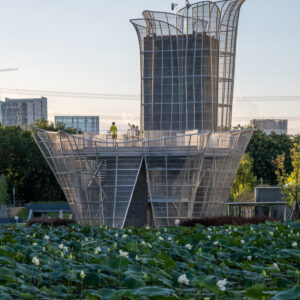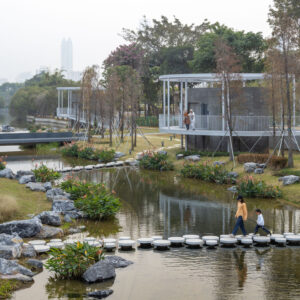- 11 August 2023
- 1163 defa okundu.
Landscape Design for Honghu Park Water Purification Station
NODE Architecture & Urbanism (NODE), Çin'in Shenzhen kentinin Luohu Bölgesi'nde Honghu Parkı Su Arıtma İstasyonu'nun peyzaj tasarımını ve uygulamasını tamamladı.
NODE Architecture & Urbanism (NODE) presents its landscape design for the Honghu Park Water Purification Station, located in a lotus-themed municipal park in Luohu District, Shenzhen, China. The Honghu Water Purification Plant is a key project for water pollution control in the city, which employs an advanced fully-buried water purification technology. NODE designed the restored surface landscape on top of the water purification facility, and the underground offices at the northern end.
Due to the importance of the park in the city, the project faced multiple claims from different aspects at the beginning of the design process. At the same time, the fully-buried water purification plant inevitably brought design challenges above the ground. Eventually, the architects went beyond engineering logic to create an aesthetically-pleasing and community-friendly public space.
The firm conducted research and extracted elements from the spatial prototypes of the pagodas, pavilions, gazebos, and corridors of traditional Lingnan gardens, transforming them with contemporary design languages and materials. By means of public art installation design approaches, they transformed the highest vent shaft into a bird watching platform and an important lotus landmark in the Park. The medium and small-sized vent shafts containing evacuation stairs were designed with accessible paths and platforms, or covered with greenery, reflecting different characteristics in spatial form for public experiences.
After opening, the project was named Shenzhen Lotus Water Culture Base and became a popular place for lotus viewing and relaxation. It represents the important attempt of NODE in infrastructure publicization projects over the years in terms of interdisciplinary design practice of water purification and landscape architecture. The firm’s hope is that, through active design efforts of landscape architects/architects, water purification facilities that are indispensable to daily life will become pleasant and ceremonial places in the city for public experience and learning, thus redefining the significance of infrastructure in both spiritual and aesthetic dimensions.
